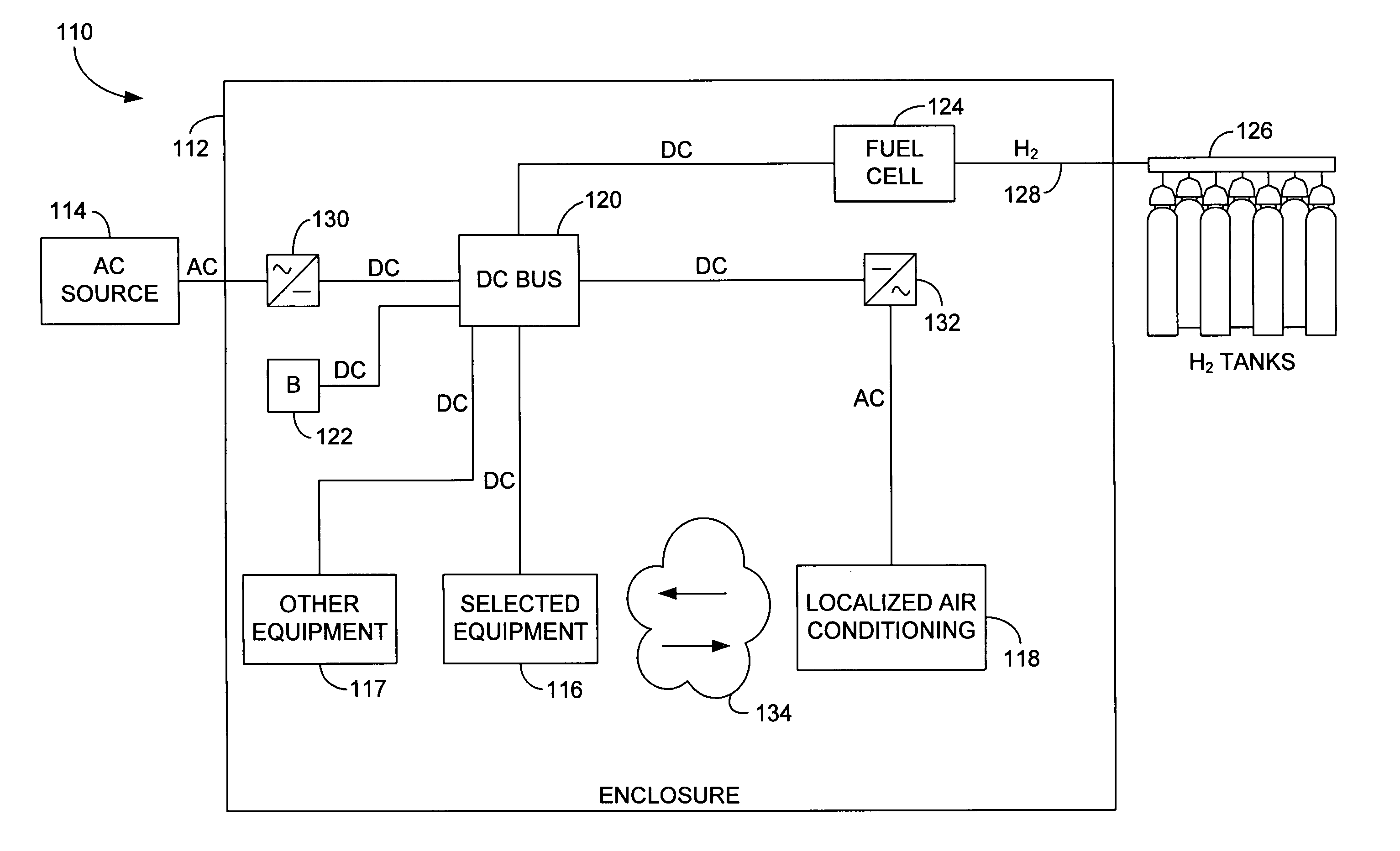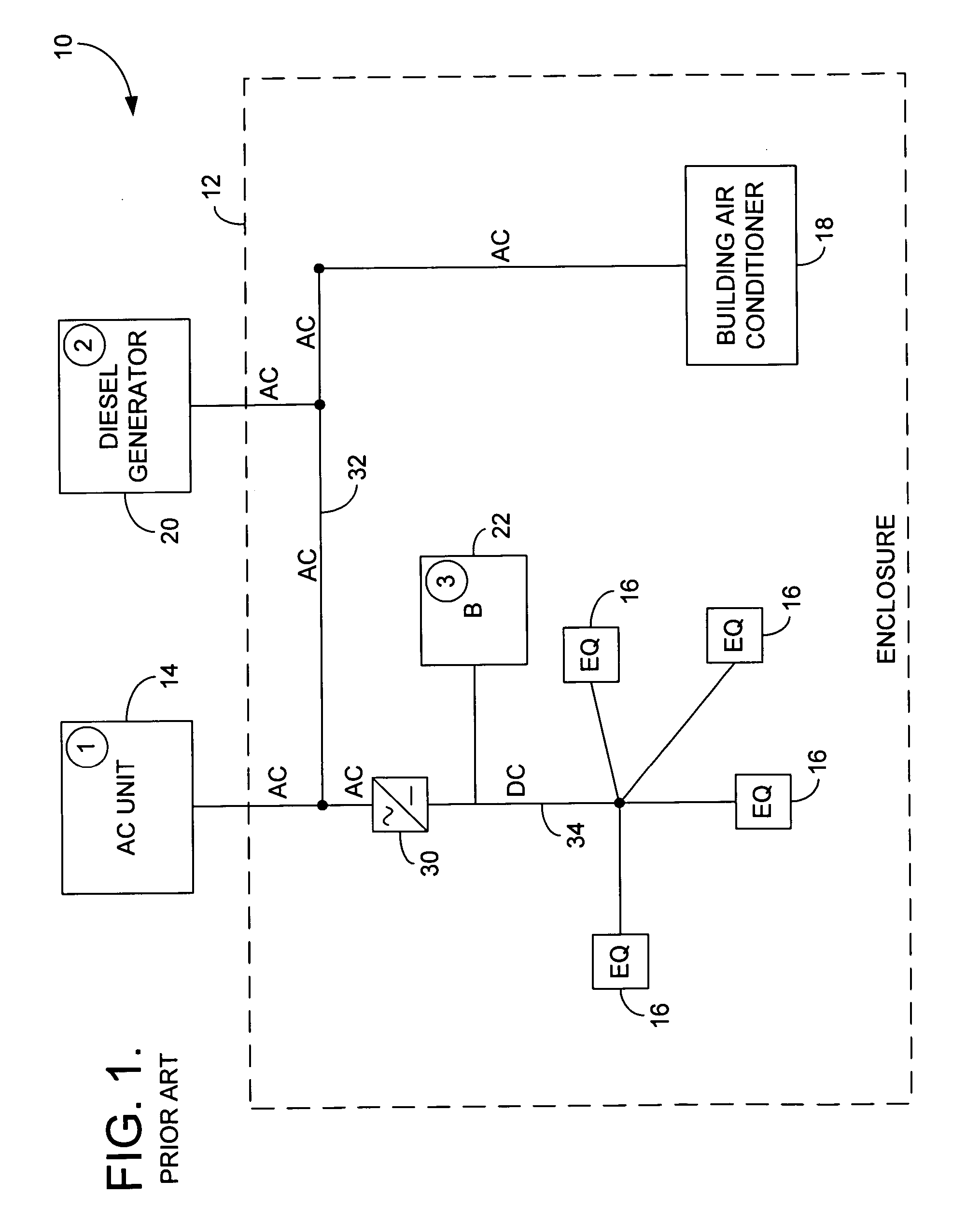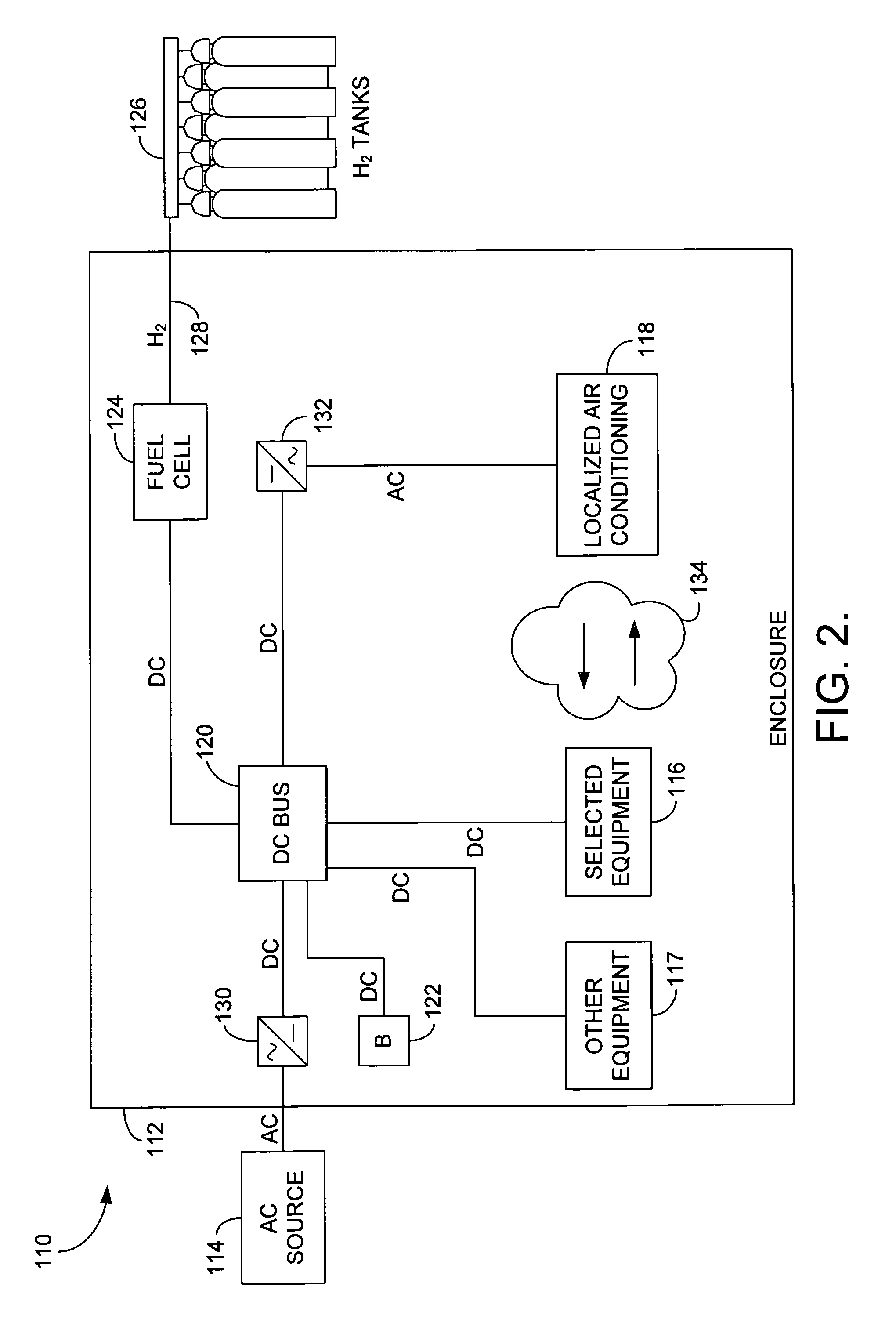Power system with fuel cell and localized air-conditioning for computing equipment
a technology of computing equipment and fuel cells, which is applied in the direction of electrochemical generators, machines/engines, emergency power supply arrangements, etc., can solve the problems of ac dependent prior art systems that have proved disadvantageous, and the dc power available from the vrlas b>22/b> cannot be inverted to power the air conditioning system, so as to prevent the overheating of the computing devi
- Summary
- Abstract
- Description
- Claims
- Application Information
AI Technical Summary
Benefits of technology
Problems solved by technology
Method used
Image
Examples
Embodiment Construction
[0019] The present invention overcomes the limitations existent in the prior art systems like that shown in FIG. 1. This is accomplished by connecting the DC power output of a hydrogen-powered fuel cell into a DC bus in the facility and using it as a last-resort power source. Further, an inverter is provided to convert some of the DC power being produced by the fuel cell to AC power to supply strategically placed air conditioning. In the preferred embodiment, the air conditioning is focused on specific computing equipment—any devices in the facility which are deemed critical. For example, some servers in the facility might be necessary for communications deemed more important than others (e.g., telecommunications service for law enforcement, disaster response, etc.). For this equipment, functional survival is imperative. Numerous other reasons exist which would compel the operator to give certain equipment priority.
[0020] With the conventional systems, air conditioning after losing...
PUM
 Login to View More
Login to View More Abstract
Description
Claims
Application Information
 Login to View More
Login to View More - R&D
- Intellectual Property
- Life Sciences
- Materials
- Tech Scout
- Unparalleled Data Quality
- Higher Quality Content
- 60% Fewer Hallucinations
Browse by: Latest US Patents, China's latest patents, Technical Efficacy Thesaurus, Application Domain, Technology Topic, Popular Technical Reports.
© 2025 PatSnap. All rights reserved.Legal|Privacy policy|Modern Slavery Act Transparency Statement|Sitemap|About US| Contact US: help@patsnap.com



